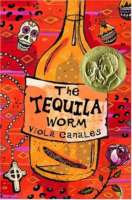by Janine Schall, University of Texas-Pan American
 In the past three weeks I’ve shared a number of books set in the Rio Grande Valley (RGV) and written by RGV authors. These books feature the culture and traditions of the mostly Latino, working class population in this geographical region along the Texas-Mexico border.
In the past three weeks I’ve shared a number of books set in the Rio Grande Valley (RGV) and written by RGV authors. These books feature the culture and traditions of the mostly Latino, working class population in this geographical region along the Texas-Mexico border.
The border is both a physical and mental construct, present in the lives of all RGV citizens. To the south, a physical barrier is formed by the Rio Grande River and the increasingly militaristic presence of customs agents and border patrol. Border patrol mark the region’s boundaries in every direction: it is virtually impossible to leave the RGV without going through a border patrol checkpoint.
Yet other borders both inhibit and generate potential and growth. Linguistic borders distinguish English from Spanish while also supporting the mixture of the two in vibrant and creative Tex-Mex. In a region where only 10-15% of the population (depending on the county) have a bachelor’s degree or higher, educational borders trap too many people into low-wage positions and limited economic potential. Perhaps underlying all these borders is the demarcation between old and new; between the traditional cultures of small town Mexican-American life and the impetus to change, to grow, to develop and reinvent.
The Tequila Worm by Viola Canales (2005), is a lovely, heartwarming story that nevertheless highlights these tensions. Sofia lives with her close, Mexican-American family in McAllen, TX. Her parents work hard to teach her the importance of family bonds, religion, and culture, but while Sofia values these things, she also wants to find her place in the world beyond the Valley. She eventually wins a scholarship to a prestigious private boarding school 350 miles away from home and must figure out how to hold on to her home values while navigating the outside world.
Three collections of short stories round out our list of books. Viola Canales’ first book, Orange Candy Slices and Other Secret Tales (2001) contains twenty brief stories about growing up in the magical borderlands of the RGV. Crazy Loco by David Rice (2001) has nine stories featuring characters that are faced with a variety of family, economic, and religious borders. Finally, ¡Juventud! Growing Up on the Border edited by René Saldaña and Erika Garza-Johnson (2013), collects eight stories and sixteen poems written by a variety of authors. While not every piece is from a RGV author, each one explores the multilingual and multicultural life of young people along the U.S-Mexico border.
References
Canales, V. (2001). Orange candy slices and other secret tales. Houston, TX: Piñata Books.
Canales, V. (2005). The tequila worm. New York: Random House.
Rice, D. (2001). Crazy loco. New York: Penguin.
Saldaña, R. & Garza-Johnson, E. (Eds.). (2013). ¡Juventud! Growing up on the border. Donna, TX: VAO Publishing.
Journey through Worlds of Words during our open reading hours: Monday-Friday, 9 a.m. to 5 p.m. and Saturday, 9 a.m. to 1 p.m. To view our complete offerings of WOW Currents, please visit archival stream.
- Themes: Janine Schall
- Descriptors: Student Connections, WOW Currents
